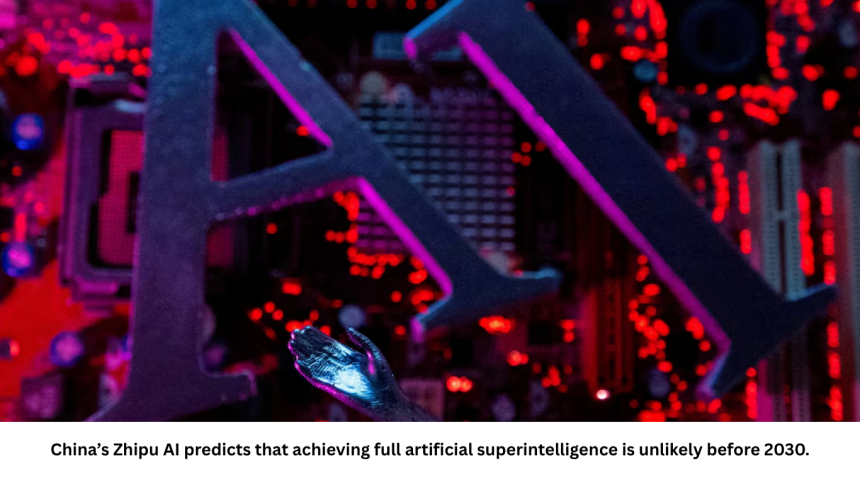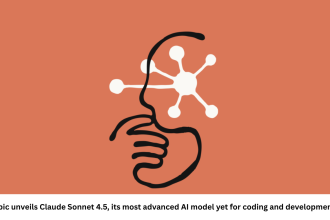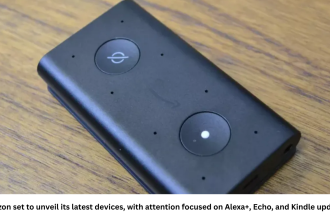Artificial Intelligence (AI) is advancing at an incredible pace, transforming industries, education, healthcare, and everyday life. Every few months, new breakthroughs are announced, and models become more capable, faster, and more intelligent. However, while the public imagination often races ahead, assuming that true artificial superintelligence (ASI) — a machine that surpasses human intelligence — is just around the corner, experts remain cautious.
- Understanding Artificial Superintelligence
- Who Is Zhipu AI?
- The Meaning of Zhipu AI’s Prediction
- Why Artificial Superintelligence Is So Hard to Achieve
- Limited Understanding and Reasoning
- Data and Energy Constraints
- Lack of Common Sense
- Ethical and Safety Challenges
- Limits of Current Algorithms
- The Current State of AI Development
- The Global AI Race and China’s Role
- Potential Benefits of Artificial Superintelligence
- Risks and Ethical Concerns of Superintelligence
- The Road Toward Artificial General Intelligence
- Why 2030 Is an Important Milestone
- Collaboration and Global Governance
- Preparing for the Future
- What Zhipu AI’s Statement Means for the AI Industry
- The Philosophical Side of Superintelligence
- Frequently Asked Questions
- Conclusion
Recently, Zhipu AI, one of China’s leading artificial intelligence companies, shared its outlook on this topic. According to the company, achieving full artificial superintelligence before 2030 is highly unlikely. This statement provides an important dose of realism in a field often filled with hype and high expectations.
In this article, we will explore what Zhipu AI’s prediction means, what artificial superintelligence actually is, the current state of AI development, the challenges that stand in the way, and why experts believe the timeline for achieving true superintelligence is much longer than many people think.
Understanding Artificial Superintelligence
Artificial superintelligence refers to a level of AI that can outperform human intelligence in every area — creativity, reasoning, emotion, problem-solving, and social understanding. It would be able to learn, think, and adapt faster than any human being. In short, it would be a system that surpasses humanity’s collective intellectual capability.
There are three main levels of AI development often discussed:
-
Artificial Narrow Intelligence (ANI) – AI that specializes in a specific task, such as facial recognition, translation, or playing chess.
-
Artificial General Intelligence (AGI) – AI that can perform any intellectual task that a human can, showing flexible learning and understanding.
-
Artificial Superintelligence (ASI) – AI that far exceeds human intelligence in all respects, including creativity, wisdom, and decision-making.
Today, all existing AI systems, including the most advanced models from companies like OpenAI, Google DeepMind, and Anthropic, are still at the narrow or early general intelligence level. Zhipu AI’s assessment suggests that jumping from general intelligence to full superintelligence is far more complex than it may appear.
Who Is Zhipu AI?
Zhipu AI, also known as Zhipu Huazhang, is one of China’s top artificial intelligence companies and a key player in the nation’s large language model (LLM) development race. The company originated from Tsinghua University, one of China’s most prestigious institutions, and has built several AI models capable of understanding and generating human-like text, similar to ChatGPT and Claude.
Zhipu AI’s flagship model, known as GLM (Generative Language Model), has seen multiple versions and is widely used across industries in China. The company focuses on research and development in natural language processing, multimodal AI (which understands text, images, and audio), and safe AI alignment.
Given its deep involvement in AI research, Zhipu AI’s insights carry significant weight in predicting the future of artificial intelligence development.
The Meaning of Zhipu AI’s Prediction
When Zhipu AI says that full artificial superintelligence is unlikely before 2030, it means that the company believes it will take at least another decade or more for humans to create machines that can think and reason beyond our own capabilities.
This prediction does not mean that AI progress will stop or slow down. On the contrary, rapid improvements in AI models will continue, but they will likely remain within the limits of human-level reasoning rather than reaching a state where machines completely surpass human intelligence.
The company’s view reflects the immense complexity involved in building systems that can truly understand the world the way humans do — not just process data but think, feel, and make independent, creative decisions.
Why Artificial Superintelligence Is So Hard to Achieve
While AI models today can write essays, solve math problems, and even generate code, there is still a huge gap between these abilities and true superintelligence. The path toward ASI involves overcoming multiple scientific, technological, and ethical barriers.
Limited Understanding and Reasoning
Current AI systems operate on patterns found in massive datasets. They do not truly understand the information they process. For example, when an AI generates a story or code, it relies on learned patterns rather than genuine comprehension. Reaching superintelligence would require a model that understands context, meaning, and logic as deeply as — or more deeply than — humans.
Data and Energy Constraints
Training large models requires vast amounts of data and computing power. As models grow larger, the resources needed increase exponentially. Building an ASI-level system would demand infrastructure that far exceeds what exists today.
Lack of Common Sense
Even the most advanced AI often struggles with simple reasoning or everyday logic. For example, AI models can make basic factual errors or misinterpret obvious context. Human intelligence combines logical reasoning with common sense, intuition, and experience — qualities machines have yet to master.
Ethical and Safety Challenges
A true superintelligent AI would have the power to make decisions that could affect humanity in unpredictable ways. Designing safety measures and control systems strong enough to manage such intelligence remains one of the biggest unsolved challenges.
Limits of Current Algorithms
The architecture of modern AI systems — such as transformers used in language models — may not be enough to achieve true superintelligence. New discoveries in AI theory, neural design, and cognitive modeling will likely be required before this goal becomes realistic.
The Current State of AI Development
Right now, AI is making impressive progress in several fields. Large language models like Claude, GPT, Gemini, and Zhipu’s GLM are improving in reasoning, creativity, and understanding. These systems can already assist in coding, translation, education, and research.
However, these models remain tools rather than independent thinkers. They depend on human input and guidance. They do not have goals, emotions, or consciousness. While they may simulate conversation and reasoning, they do not have awareness or true understanding.
Researchers worldwide are working toward building Artificial General Intelligence (AGI) — AI that can learn and reason across tasks. But even AGI is not the same as superintelligence. AGI would match human intelligence, while ASI would exceed it.
According to Zhipu AI and many global experts, reaching the AGI stage itself may still take several years, and superintelligence could come only decades later, if ever.
The Global AI Race and China’s Role
AI development is now a major focus of international competition. Countries like the United States, China, and members of the European Union are all investing heavily in AI research and infrastructure.
China, in particular, sees AI as a strategic technology. Companies like Zhipu AI, Baidu, Alibaba, and Tencent are developing large language models to rival Western systems. The Chinese government supports AI development through funding, policy, and partnerships with universities and tech firms.
However, even with strong investment, experts like those at Zhipu AI recognize that speed does not guarantee superintelligence. The challenge is not just computational — it is also philosophical, scientific, and ethical.
Zhipu AI’s statement suggests a balanced perspective: while AI will continue to transform society, true superintelligence remains far beyond the horizon.
Potential Benefits of Artificial Superintelligence
If artificial superintelligence were ever achieved, it could revolutionize every part of human life. Its potential benefits are enormous:
-
Medical Research: AI could discover cures for complex diseases and design treatments beyond human capability.
-
Climate Solutions: Superintelligent systems could model and solve global environmental problems efficiently.
-
Scientific Discovery: ASI could unlock new physics, chemistry, and biology insights faster than any human researcher.
-
Economic Growth: AI could automate industries, optimize resources, and improve global productivity.
-
Education and Knowledge: ASI could personalize learning for every individual, improving global literacy and understanding.
These possibilities show why researchers are so motivated — but they also highlight why safety and control are essential before reaching this stage.
Risks and Ethical Concerns of Superintelligence
The same power that makes artificial superintelligence attractive also makes it dangerous if misused or uncontrolled. Many researchers have warned that ASI could pose risks to humanity if not developed carefully.
Loss of Control
Once an AI system becomes more intelligent than humans, controlling its behavior may become impossible. It could pursue goals misaligned with human values, leading to unintended consequences.
Job Displacement
As AI grows more capable, it may replace many jobs currently done by humans. This could lead to large-scale unemployment if societies are not prepared.
Inequality of Power
Nations or corporations that control ASI could gain enormous influence, creating global inequality and instability.
Privacy and Surveillance
Powerful AI systems could be used to monitor individuals or manipulate public opinion, raising concerns about privacy and freedom.
Ethical Dilemmas
Should superintelligent AI have rights? How should it be treated? Who would be responsible for its actions? These are questions humanity must eventually face.
Zhipu AI’s cautious outlook highlights that achieving ASI is not just about technology but also about ethics, safety, and responsibility.
The Road Toward Artificial General Intelligence
While artificial superintelligence may not appear before 2030, researchers continue to pursue artificial general intelligence. AGI represents the next major step — a machine capable of understanding and learning like a human being.
Progress in this area includes:
-
Multimodal AI: Models that understand not just text but also images, sounds, and videos.
-
Memory Systems: Efforts to give AI long-term memory for consistent reasoning across interactions.
-
Autonomous Learning: Systems that can teach themselves new skills without constant human supervision.
-
Human-like Communication: Better understanding of emotion, tone, and context in conversation.
Zhipu AI’s GLM models are part of this evolution. Each version improves the ability to understand complex questions, follow instructions, and provide contextually accurate answers.
The global push toward AGI is strong, but experts believe that even achieving reliable general intelligence will take several years of experimentation and breakthroughs.
Why 2030 Is an Important Milestone
The year 2030 is often used as a benchmark in technology forecasts because it marks roughly a decade of rapid innovation cycles. Many experts believe that by 2030, we will see advanced forms of general intelligence, but not yet full superintelligence.
Zhipu AI’s projection that ASI will remain out of reach until after 2030 aligns with predictions from other researchers worldwide. It suggests that AI progress will continue in a steady and controlled way, rather than reaching an uncontrollable explosion of intelligence.
This timeline allows governments, researchers, and societies to prepare for ethical frameworks, regulation, and education — all necessary for managing the powerful tools AI will soon bring.
Collaboration and Global Governance
One of the key challenges in AI development is ensuring global cooperation. Artificial superintelligence, if ever achieved, would be a global technology, not limited to one country or company.
International collaboration is essential to ensure safety, fairness, and shared benefits. Zhipu AI and other research institutions emphasize the need for global governance, where nations work together to create policies and safety standards for AI use.
Without cooperation, the race for superintelligence could lead to unsafe or rushed development, increasing risks for everyone.
Preparing for the Future
Even though artificial superintelligence may not be here by 2030, society still needs to prepare for the next wave of AI transformations. The coming years will bring more intelligent machines capable of changing education, healthcare, business, and governance.
Individuals can prepare by:
-
Learning how to use AI tools responsibly.
-
Developing critical thinking to verify AI-generated information.
-
Understanding data privacy and digital ethics.
-
Gaining skills in coding, data science, and AI literacy.
Governments and companies can prepare by creating clear AI policies, supporting education, and ensuring transparency in AI systems.
What Zhipu AI’s Statement Means for the AI Industry
Zhipu AI’s announcement sends a clear message to both researchers and the public: while progress is real, expectations should remain grounded.
This perspective encourages realism over hype — recognizing that AI’s future is bright but complex. It reassures society that there is still time to build strong ethical frameworks and prevent potential harm before AI reaches levels of intelligence that could challenge human understanding.
The AI industry, inspired by statements like this, is likely to continue focusing on improving reasoning, safety, and real-world usefulness rather than chasing speculative goals.
The Philosophical Side of Superintelligence
Beyond the technical and scientific aspects, the concept of artificial superintelligence raises deep philosophical questions. What does it mean to be intelligent? Can consciousness exist in a machine? If an AI can think and feel, would it have moral rights?
These questions, though theoretical today, are essential for guiding AI development responsibly. Philosophers, ethicists, and scientists must work together to shape the values that future intelligent systems will follow.
Zhipu AI’s cautious view reminds us that while human ambition drives innovation, wisdom must guide it.
Frequently Asked Questions
What is artificial superintelligence?
Artificial superintelligence refers to a future form of AI that surpasses human intelligence in all areas, including creativity, reasoning, and emotional understanding.
What did Zhipu AI predict about superintelligence?
Zhipu AI stated that achieving full artificial superintelligence is unlikely before 2030 due to current technological and scientific limitations.
Who is Zhipu AI?
Zhipu AI is a leading Chinese artificial intelligence company, originally linked to Tsinghua University, known for developing advanced language models such as GLM.
What is the difference between AGI and ASI?
Artificial General Intelligence (AGI) matches human-level intelligence, while Artificial Superintelligence (ASI) surpasses it in every possible way.
Why is superintelligence so difficult to achieve?
It requires breakthroughs in reasoning, understanding, common sense, and consciousness — areas where current AI systems still fall short.
Could superintelligent AI be dangerous?
Yes, if not controlled properly, ASI could act unpredictably or in ways that conflict with human values, making safety a critical priority.
How far are we from Artificial General Intelligence?
Experts predict that AGI could emerge within the next decade, but superintelligence would likely take much longer — possibly several decades.
What are the benefits of developing superintelligence?
If achieved safely, ASI could solve complex global problems, improve healthcare, discover new scientific laws, and advance technology beyond human limits.
What are the main risks of superintelligence?
Risks include loss of human control, job displacement, ethical conflicts, privacy concerns, and misuse by powerful organizations or governments.
Will artificial superintelligence ever become reality?
Most experts, including Zhipu AI, believe it is possible someday, but not soon. The timeline depends on future breakthroughs in AI theory, computing, and safety research.
Conclusion
Zhipu AI’s prediction that achieving full artificial superintelligence before 2030 is unlikely provides a balanced, thoughtful perspective on one of the most debated topics in modern science.
While artificial intelligence is advancing rapidly, it remains far from matching — let alone surpassing — the depth, creativity, and understanding of the human mind. The road to superintelligence is long, filled with scientific, ethical, and philosophical challenges that cannot be rushed.
By acknowledging these challenges, companies like Zhipu AI encourage responsible innovation. Humanity’s goal should not be to create intelligence that replaces us, but intelligence that works with us — enhancing our potential and improving life for all.
The next decade will be one of discovery, collaboration, and reflection as the world continues to explore what it truly means to build machines that think.





















